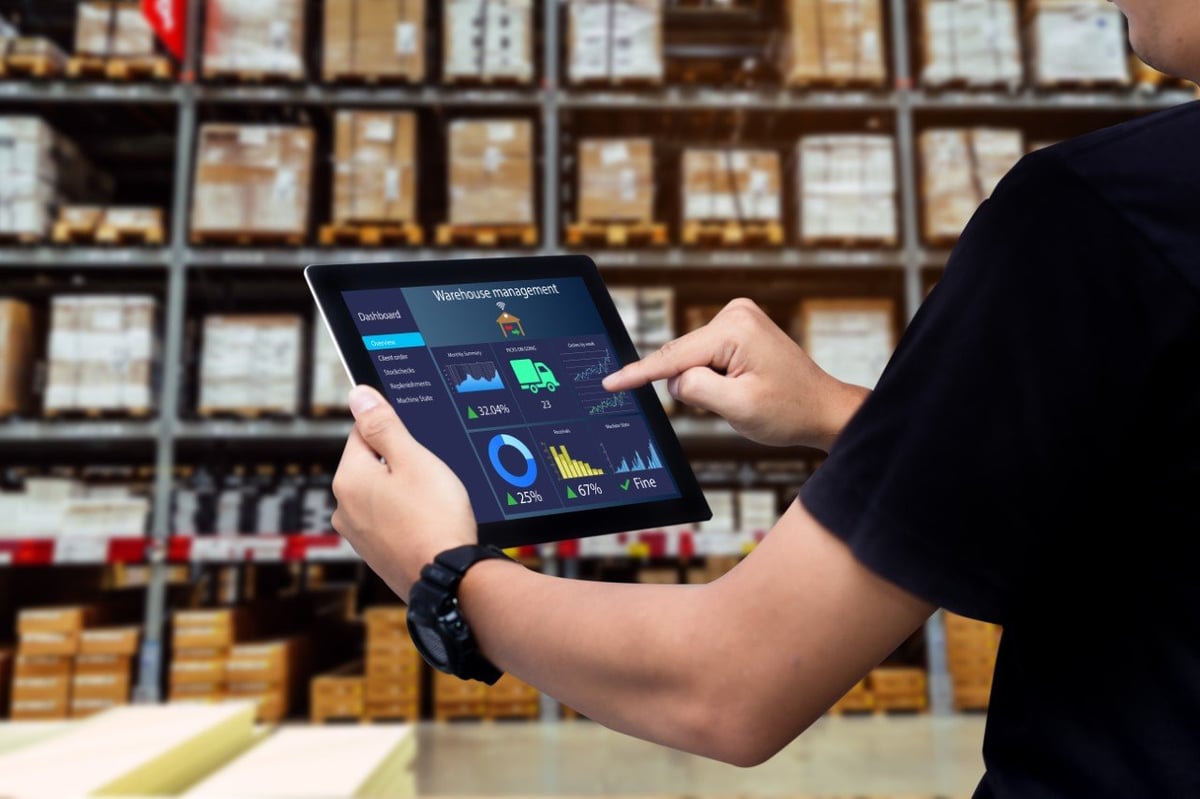Automation is one of the fastest growing trends in the third-party logistics (3PL) industry. With shipping expectations greater than ever before, warehouses are increasingly turning away from traditional pen and paper management systems to software that helps them manage a greater workload at a higher rate of speed. Additionally, automating warehouse processes using technology can greatly reduce manual error and maximize time and cost efficiency.
Going into 2022, several tools will be key to helping 3PL warehouses become faster, cost-efficient, and self-sufficient. The tools below can help you get started automating your business, beginning with the most foundational.
Warehouse Management System (WMS) Software
Implementing a warehouse management system (WMS) can be a powerful first step toward automation by enabling warehouses to eliminate paper-based processes and manually entered data. This can greatly improve efficiency by not only reducing the amount of time used to maintain information but by reducing room for error. WMS software can provide quite advanced automation for picking and packing small parcels at high volume, integrations with popular shopping carts and shippers, and robust analytics and business intelligence reporting.
Features among WMS platforms may vary, but a good WMS should be able to automate routine tasks within the warehouse as well. For example, Extensiv 3PL Warehouse Manager allows you to automate several warehouse processes, from inventory tracking, to order management, billing, and customer communications. You can also automatically shop the best shipping rates and integrate with online shopping carts or marketplaces like Shopify and eBay to make fulfillment more seamless. Plus, see customized reports on your progress to enable informed decision-making. All of this can be done from any device on the cloud, so it can be accessed from anywhere – no paper or pencil required.
Mobile Scanning and Digital Barcodes
Mobile barcode scanning devices and platforms are the next step to seamless, automated fulfillment. Mobile scanners allow warehouse employees to pick, scan, and pack in real time. Like automating with a WMS, mobile scanning devices and applications can help reduce errors and improve visibility into a team’s performance, giving management insight so they can make better decisions. Many of these apps, like SmartScan, can integrate directly with your WMS to capture all data in one accessible cloud location.
If you’ve ever shopped in a grocery store, you’re probably familiar with digital barcodes, or electronically generated images, usually consisting of a series of lines, that hold a customizable set of data about whatever is labeled with the barcode. This may seem like a no-brainer, but digital barcodes are an important step to warehouse automation because they allow for automatic data capture and instantaneous transfer. They are inexpensive, easy to design and print, and extremely versatile. New employees can scan barcodes into a system with minimal training.
Internet of Things (IoT)
When warehouses have implemented these key basics of automation and are ready to take their warehouse’s interconnectivity to the next level, Internet of Things (IoT) sensors can provide an even greater level of visibility and bring even more of the physical warehouse into the cloud. IoT sensors can track a multitude of different things, from the temperature of perishable inventory to the location of a forklift, in real time. Another component of IoT is RFID technology, which can be placed on a package to track its movement within the warehouse and/or embedded in the floor to identify aisle locations and distances.
Not only can IoT increase visibility throughout the warehouse, but some devices are equipped with artificial intelligence that allows them to learn and adapt to conditions specific to a particular function or environment.
Benefits of Automation for 3PLs
According to this year’s Third-Party Logistics Warehouse Benchmark Report, 48% of warehouses surveyed cited finding and keeping qualified labor as their biggest challenge. Warehouse process automation saves time and leaves less room for error when training new employees. In addition, automating can eliminate the need for physical filing systems and reduce the number of administrative staff needed while improving physical security. Automating essential business processes allows you to become more self-reliant and less reliant on the physical aspects of a business. If employees leave, your institutional knowledge doesn’t leave with them–it can be stored in the cloud.
Automating warehouse processes can also help warehouses operating close to or at capacity run more efficiently and optimize available space. This year’s Benchmark Report found that at least half of respondents are operating their warehouses at 90% capacity. With an efficient picking, packing, and storage system automated by technology, employees can easily track down inventory, scan it on the go, and mark orders as completed with a few clicks. In addition, this can lower costs by reducing human error and improve ROI on the staff, tools, and space you do have.
For more 3PL trends and best practices for the upcoming year, check out this year’s Benchmark Report and be sure to keep up with our blog for more industry insights from 3PL experts.









